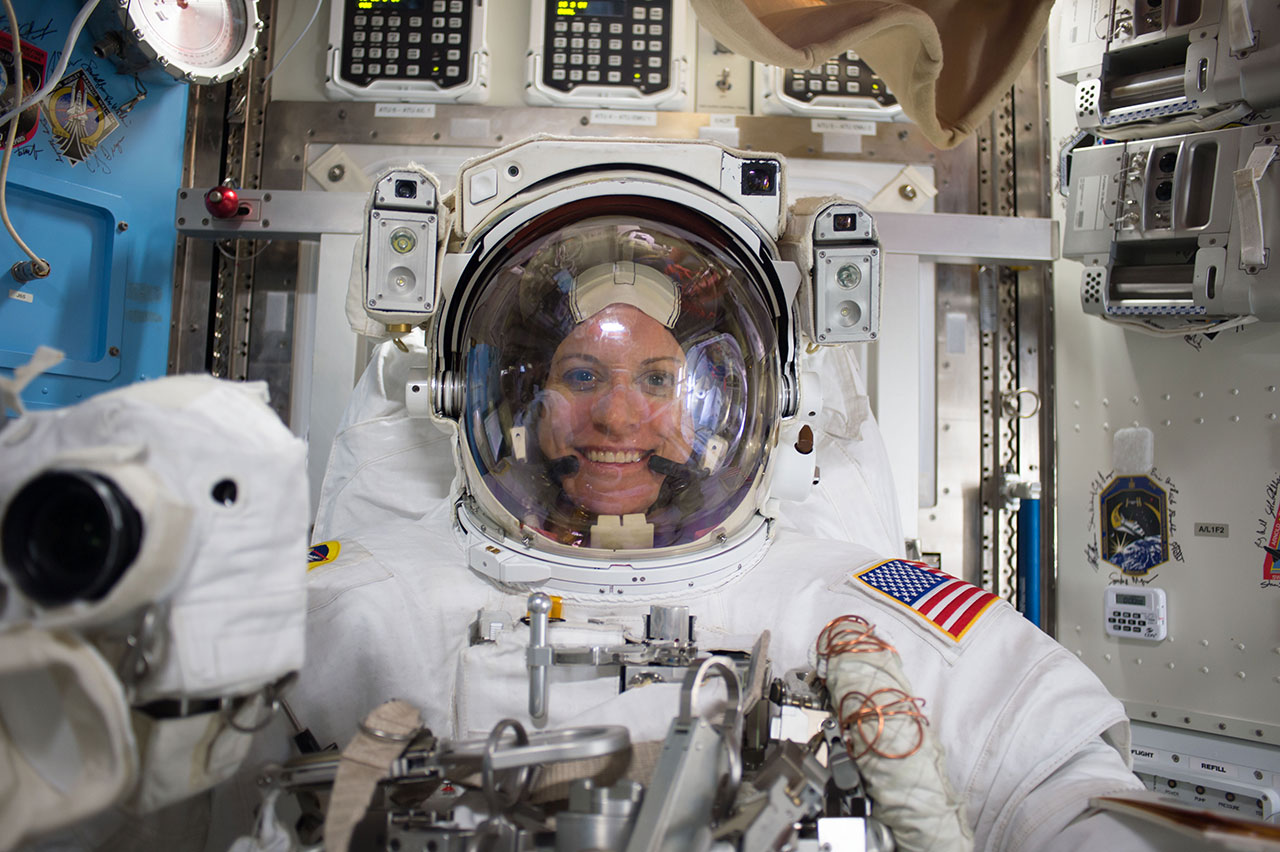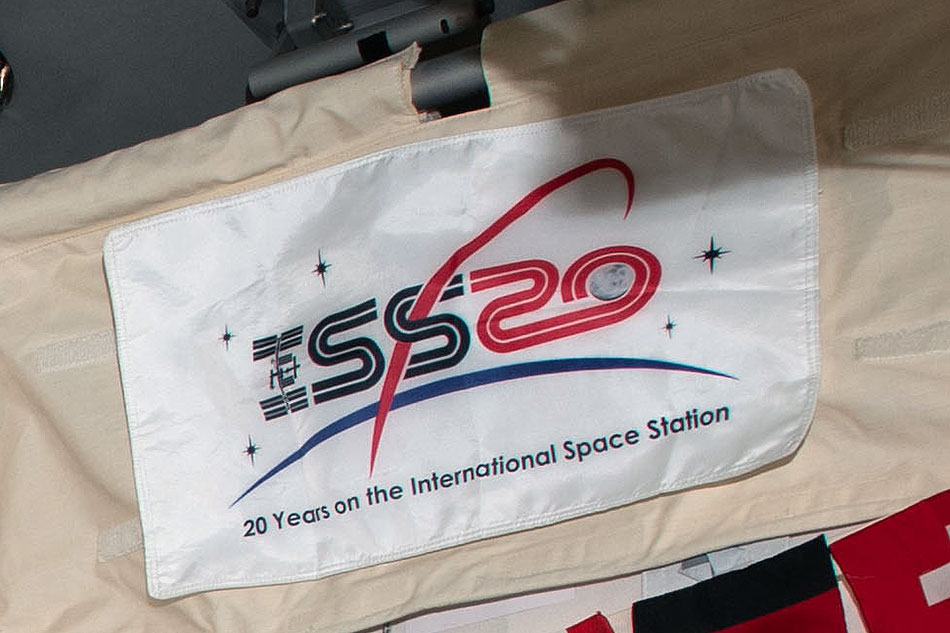Astronaut 'ties' past 20 years of crews on space station to simple tool
It's a humble tool, but vital in space.
Floating in the orbiting laboratory, surrounded by science apparatus and two-decades worth of accumulated equipment, Kate Rubins picked out a simple tool to represent 20 years of continuous crewed operations on board the International Space Station (ISS).
Rubins and her two Expedition 64 crewmates, Sergey Ryzhikov and Sergey Kud-Sverchkov, were aboard the space station on Monday (Nov. 2) to mark and extend the milestone achievement.
"It is an incredible honor for us to be up here on the 20th anniversary of the first manned presence on the space station and this continuous human presence for 20 years," Rubins said, addressing reporters on Friday (Oct. 30). "We happened to have picked a really good expedition to be up here and I think we all feel very lucky."
Related: The Expedition 1 crew recalls their epic Halloween launch

Expedition 1, the space station's first residency, began when NASA astronaut Bill Shepherd and cosmonauts Sergei Krikalev and Yuri Gidzenko of the Russian space agency Roscosmos came aboard the then still-burgeoning outpost on Nov. 2, 2000. During their six-month stay, the three crewmates saw the complex grow from a three module assembly to also include a U.S. laboratory ("Destiny") and the space station's first pair of large solar array wings.
Since then, 238 people have called the ISS home for periods lasting a few months to almost a full year, while the outpost has continued to expand to now include over a dozen modules from Russia, the U.S., the European Space Agency (ESA) and Japan, as well as a large Canadian-built robotic arm.
Related: The International Space Station can't last forever. Here's how it'll die
Of all the items that fill the sprawling complex, Rubins said it was the wire tie that best represented the past 20 years.
Get the Space.com Newsletter
Breaking space news, the latest updates on rocket launches, skywatching events and more!
"So we use these wire ties on EVAs," Rubins said, referring to extravehicular activities, or spacewalks, in her reply to a question from collectSPACE. "They're a pretty simple object, but they absolutely do the trick. They're really one of the workhorses of EVA and it's very simple thing that you wouldn't think is so important and yet it's absolutely incredible when we're doing spacewalks."
"It [the wire tie] represents all of the kinds of things we can do," she said.
Used to secure tools and other items to prevent them from drifting away in open space, the bulked-up cousin of a twist tie has been a staple among the equipment used on the hundreds of spacewalks that it took to assemble and maintain the space station. One of the legacies of the ISS will be what it did to mature the skill of working in the vacuum of space and without the ability to go EVA, the station would not exist today.

Ryzhikov mentioned an even more direct reminder "tying" his Expedition 64 crew to the station's original residents.
"Today we found a note from the first crew about the installing of new equipment on board, so I think we remember them," he said on Friday.
That note may have been one of the hidden messages left behind by Expedition 1 commander Bill Shepherd, as he described on the occasion of his mission's 15th anniversary. Another of the crews removed a makeshift cover off a ventilation duct and discovered one of his handwritten notes on the metal plate.

"I wrote on the back of it that this was something that was manufactured by the first expedition, figuring that no one would ever see that," Shepherd told collectSPACE.com in 2015. "There are a few other things hidden away in various parts of the original modules on [the] space station that I don't think people have found yet, but some day."
In pictures: The most memorable spacewalks in history

The 20th anniversary will be an otherwise normal work day on the space station. "The celebration day will be a Monday, so probably we'll be celebrating this day by continuing working hard," said Kud-Sverchkov. But it may also include time for the crew to reflect on the milestone.
"I think we're going to probably just have a simple dinner celebration up here on the ISS," said Rubins. "I think the most fitting tribute is for the three of us to just go take a nice long view out the Cupola, look at the beautiful Earth and appreciate this amazing space station."
Follow collectSPACE.com on Facebook and on Twitter at @collectSPACE. Copyright 2020 collectSPACE.com. All rights reserved.
Join our Space Forums to keep talking space on the latest missions, night sky and more! And if you have a news tip, correction or comment, let us know at: community@space.com.

Robert Pearlman is a space historian, journalist and the founder and editor of collectSPACE.com, a daily news publication and community devoted to space history with a particular focus on how and where space exploration intersects with pop culture. Pearlman is also a contributing writer for Space.com and co-author of "Space Stations: The Art, Science, and Reality of Working in Space” published by Smithsonian Books in 2018.In 2009, he was inducted into the U.S. Space Camp Hall of Fame in Huntsville, Alabama. In 2021, he was honored by the American Astronautical Society with the Ordway Award for Sustained Excellence in Spaceflight History. In 2023, the National Space Club Florida Committee recognized Pearlman with the Kolcum News and Communications Award for excellence in telling the space story along the Space Coast and throughout the world.

